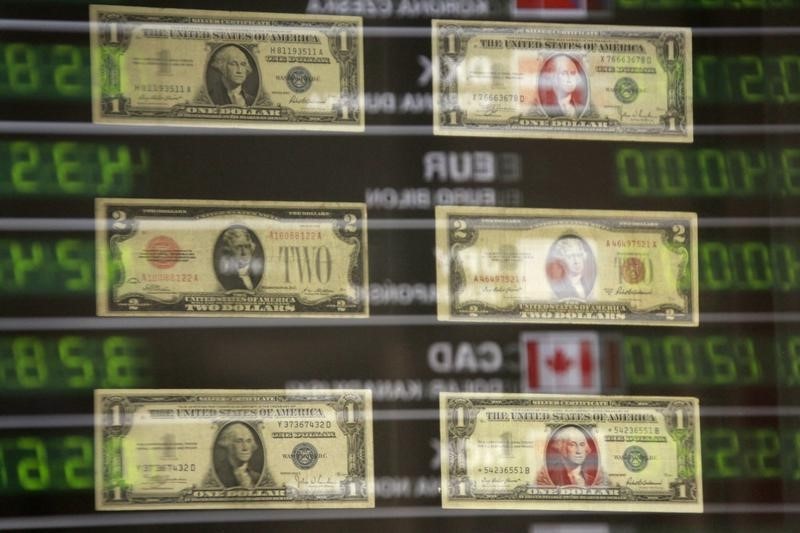By Wayne Cole
SYDNEY, April 28 (Reuters) - The Australian dollar slipped on Wednesday after surprisingly soft inflation data argued for super loose policy for years to come, though surging commodity prices helped limit losses.
The Aussie fell 0.3% to $0.7740 AUD=D3 and away from resistance at $0.7815. Support comes in around $0.7735 and $0.7695.
The New Zealand dollar followed with a dip to $0.7195
NZD=D3 , having failed to sustain a five-week top of $0.7243 touched on Monday. Support lies around $0.7150/60.
Australian consumer prices rose just 0.6% in the first quarter, when analysts had looked for 0.9%.
Even more startling was a slowdown in a key trimmed mean measure of inflation to a record low of 1.1%, far away from the Reserve Bank of Australia's (RBA) target band of 2-3%.
Given core inflation has run below 2% for more than five years, it would need to run above 3% for some years to average out at the mid-range target of 2.5%.
"Bottom line: the Reserve Bank will maintain its resolve and keep the cash rate at record lows until 2024," said Craig James, chief economist at CommSec.
The market reacted by pulling 10-year bond yields down 4 basis points to 1.69% AU10YT=RR , shrinking the spread over U.S. Treasuries to 7 basis points.
"There is still spare capacity in the job market, so there is no sign as yet of generalised wage pressures," James added. "The RBA doesn't expect wage pressures to emerge until the jobless rate is closer to 4% – clearly still some way off."
The unemployment rate was last at 5.6% in March.
One area where there is inflation is commodity prices.
Copper has climbed 27% so far this year while prices for iron ore, Australia's single biggest export earner, hit a record high above $193 a tonne on Tuesday. bull run has been a windfall to mining profits and to tax receipts for the government, which had projected an iron ore price of around $55 a tonne.
That boon, combined with a much stronger labour market, could cut its 2020/21 budget deficit by around A$50 billion and lessen the need to borrow.
"We anticipate net debt will peak at around A$875 billion, compared with the A$950 billion expected at the time of the mid-year outlook (released last December)," said ANZ market economist Hayden Dimes.
"For 2021-22, we could see a large fall in issuance compared to the A$230 billion planned. If the fiscal position improves as much as we anticipate, the issuance plan will end up well below A$100 billion." (Editing by Jacqueline Wong)
